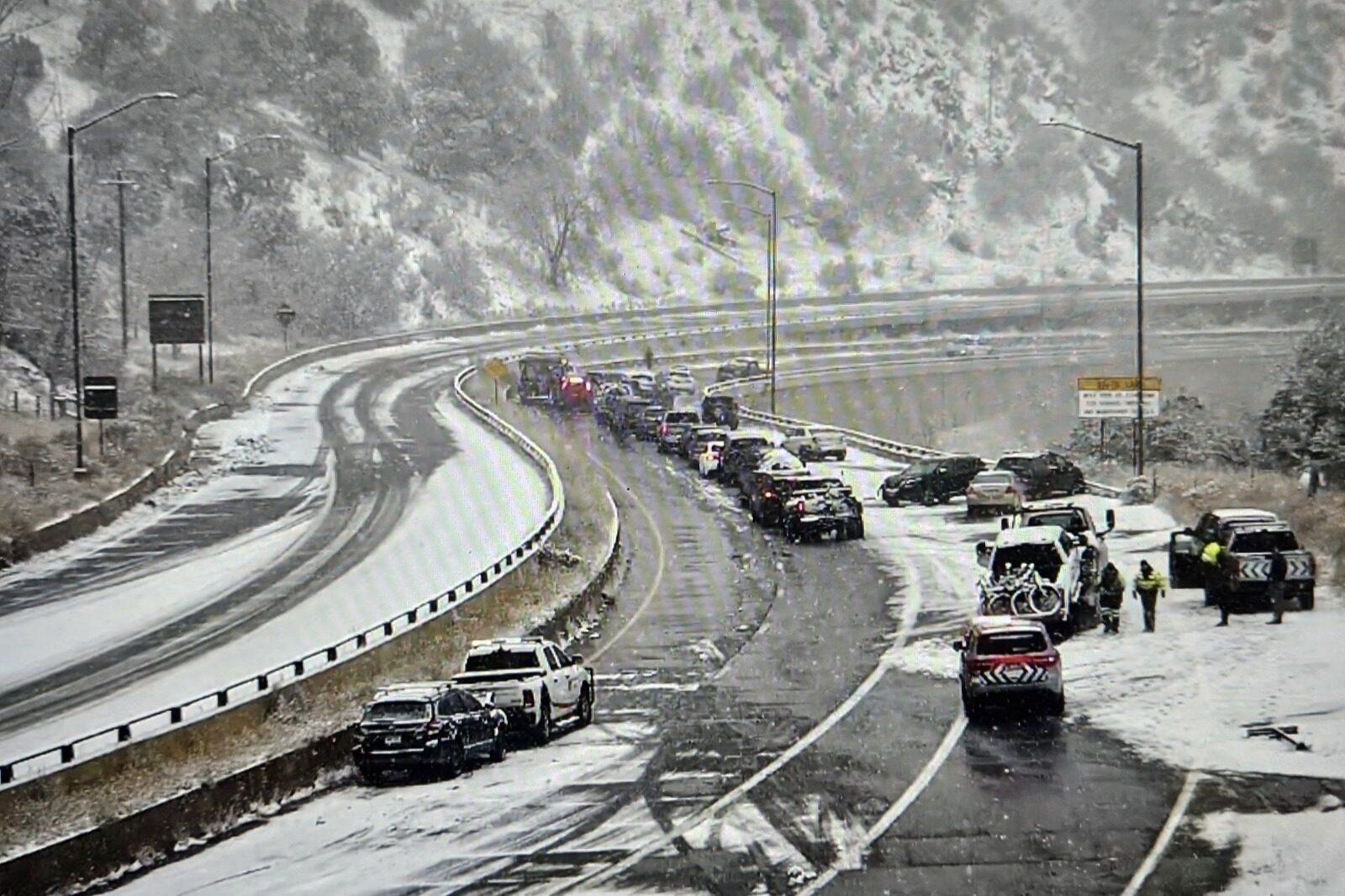
When you win $5 million from a multiyear, international research competition by beating out teams from top universities around the world, one of the first orders of business is to take care of some IOUs.
“(Our team) had to pay for their own research equipment and all those things and on the condition that some of this would be paid back in the event that we won prize money,” Colorado Mesa University biology professor Tom Walla said. “So I have 52 different contracts with members of the team that will get some prize money as a result of our win.”
Walla is the team lead for Limelight Rainforest, which was awarded the top spot in the XPRIZE Rainforest competition — a four-year endeavor in which teams from around the world competed in Singapore and then Brazil to develop new technologies and strategies for evaluating rainforest biodiversity.
“It seemed absolutely insane in its goals,” Walla said of the XPRIZE challenge. “And of course, this is four years ago and I'm looking out going, ‘I don't know, man, I don't think we'll be anywhere near the finals.’ I mean, the competitors are from some very, very well-funded and talented institutions, and we really didn't have the same support they did. We had a lot of heart and we had a lot of field experience.”
Limelight Rainforest, which included professors and students from Colorado Mesa University and specialists from across the world, claimed the inaugural prize at an awards ceremony in Rio de Janeiro on Nov. 15 thanks to their work on a system that dropped specialty equipment into rainforest canopies using drones that could monitor everything from bird sounds to trace elements of DNA left on the forest floor.
At times the project had to run off a car battery. It once cooked a top-of-the-line laptop to just below the boiling point of water and even saw an audio recorder attacked by a rare neotropical bird. It was also only possible, Walla said, because of a group more interested in rainforest conservation and a challenge than in ever making their money back.
“A lot of those people that worked on this are the Indigenous people who are in Ecuador, for example, and some of them in Brazil and all those people will get some payback, which makes it real to them,” Walla said. “It's always great to be part of something, but I don't think anybody ever expects to get some actual income from this, which it's really going to be great for all those people who put so much into it.”
A jump start to DNA sequencing
The XPRIZE competition included a semifinal round in Singapore and a final round featuring six teams in Brazil. The teams had 24 hours to survey a region or rainforest and then another 48 hours to process all the data they’d collected into a biodiversity analysis.
What’s more, they’re not allowed to physically access the area.
“Outreach Robotics produced these pretty good-sized drones. They're about two meters in diameter and they carried canopy rafts, which are about a two-meter-in-diameter sensor vehicle that sits on top of the canopy,” Walla said. “So we basically drop them off with a big claw out there and let them stay overnight and bring them back in the morning.”

On those rafts are microphones, cameras and other sensors. They can feed bird sounds to researchers who can then make identifications or snap pictures of bugs to catalog into a database. The system could also sample environmental DNA on the forest floor from all the way up in the tree canopy.
“Imagine the kids' game of ‘Operation.’ We dropped a pump down between the trees to the flooded story floor and sucked about 50 liters of water out down there,” Walla said. “And in that water, any organisms that are there that leave a few cells, we can measure the DNA in those cells and identify those species. And we found jaguars, we found dolphins — the pink river dolphins that live in the flooded forest. We found jaguarundis, which are small jaguar-like animals. We found monkeys. All of that from their trace amounts of DNA left in the water.”
Denita Weeks, associate professor of biology at CMU, had to sequence all that DNA evidence in an environment with limited power resources and a lot of ways to break things.
“Trying to do it in the field completely in a tent off of a car battery seemed like a really wild idea,” Weeks said. “So that in itself was something that we'd never tried before. The type of research that we were doing in the field, a lot of it had not been done before in those conditions.”
Johanna Varner, associate professor of biology at CMU and the director of strategic planning and communications for the Limelight Rainforest team, said that for all of the innovation on the research side, creativity in fieldwork was required in equal measure.
“It's like the hardest field environment that exists on planet Earth. It's hot, it's sticky,” Varner said. “We actually fried the wifi card of one of the most expensive laptops that money can buy for the tree segmentation program. They brought it down to practice, they ran it in the field and the temperatures inside of the computer literally got to 99.9 degrees Celsius and it fried up the wifi card.”

In the finals, they logged hundreds of different species across the plant and animal kingdoms. The thinking behind the project is that if there is a way to evaluate an acre of rainforest based on its biodiversity, it’ll provide value to the land beyond just the number of cows it can support, thereby leading to advancements in conservation.
Over the course of their trials and practice runs, Team Limelight tracked numerous rare species, including one that will go into the big book of field-work woes.
“We were very lucky to have gotten to see a harpy eagle while we were there, which for people who don't know are a very rare species of bird,” undergraduate ecology student Taylor Schmitz said. “It did destroy one of our audio recorders, which was really unfortunate, but really cool to say that it was a harpy eagle.”
“I'm not sure what he thought it was. I think he definitely looked at us while he did it, but you can't be mad when it's such an amazing experience to watch,” Schmitz added.
Spreading the wealth
November marked the end of the XPRIZE competition, but not the end of Limelight Rainforest. Walla said the technology needs refinement and simplification so that it can be used by rainforest communities to evaluate their own lands.
To do that, Walla tapped Colorado Mesa University political science professor Tim Casey.
“The task now is to try to translate this technology and help local and Indigenous populations … and so part of what I'm going to try to do on the team is figure out a way to tap their knowledge. They don't have PhDs, many of them don't even have a high school degree, but they are brilliant at knowing what's in the forest and knowing the interactions and those insights,” Casey said.
Casey came to the project after hearing Walla speak about it at Colorado Mesa and asking if he could be a part of it. Walla said the ad hoc formation of the team is what made it successful.
“I really feel like the greatest leaps forward occurred each time that I met somebody with a gift and a skill for working in a new area,” Walla said.

Varner added that it helped that CMU backed the project not only logistically and financially, but also in creating opportunities for undergraduate students like Schmitz.
“It’s really meaningful that not only did CMU support this endeavor and this crazy wild project, but also provided us with a means to provide a completely unparalleled experience for our students,” Varner said.
Schmitz, who had been working on the DNA side of the project through the finals in Brazil, said now that news of the team’s win has spread, she’s gotten more questions about what exactly she’d been doing all that time.
“I have people, my friends who knew about this project, knew that I was in Brazil doing this, working with my professors, but now that all these stories have come out better explanations of the work we actually succeeded in doing, they're even coming up to me. ‘I had no idea that's what you were doing. That's incredible. You're saving the rainforest,’” Schmitz said, “and I guess in a sense it's kind of like, ‘yeah, we are.’”








